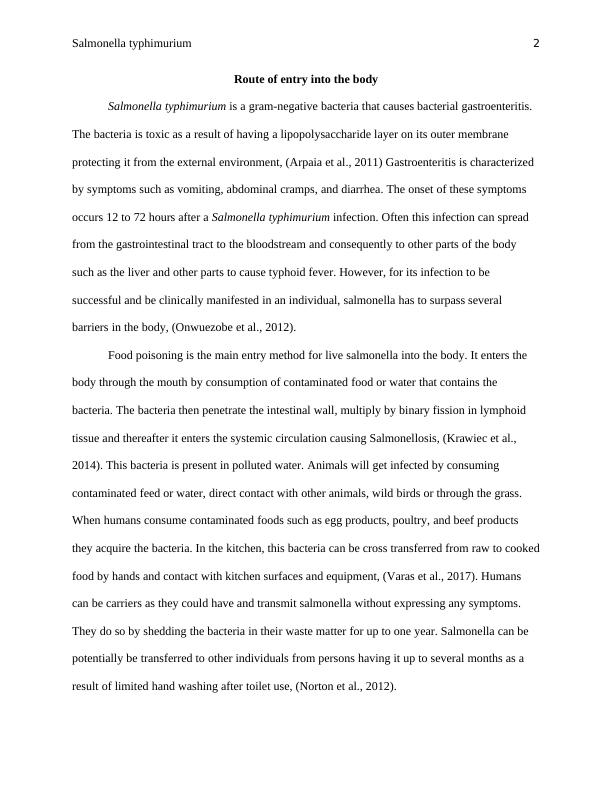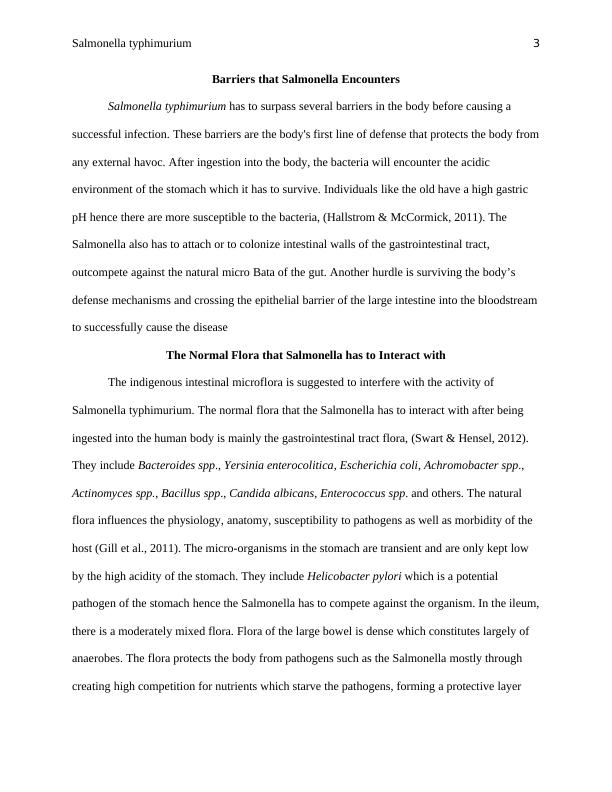Study on Salmonella Typhimurium Bacteria: Report
Added on 2022-07-29
About This Document
Choose a type of pathogen (e.g., a virus or bacterium) and take your pathogen on a tour of the human body. Your goal is to provide the pathogen with as much information as possible so that it can effectively navigate the human immune system and establish an infection. Write a 1,050- to 1,400-word report that answers the following questions: 1. Choose a point of entry into the human body, and outline potential barriers the pathogen might encounter. 2. Provide an overview of the normal flora in the human body that your pathogen may interact with, and include some challenges that the flora might present. 3. Provide an overview of the workings of the innate immune system, including the major components. Are there ways in which your pathogen might slow down or avoid the innate immune system?
Study on Salmonella Typhimurium Bacteria: Report
Added on 2022-07-29
End of preview
Want to access all the pages? Upload your documents or become a member.



